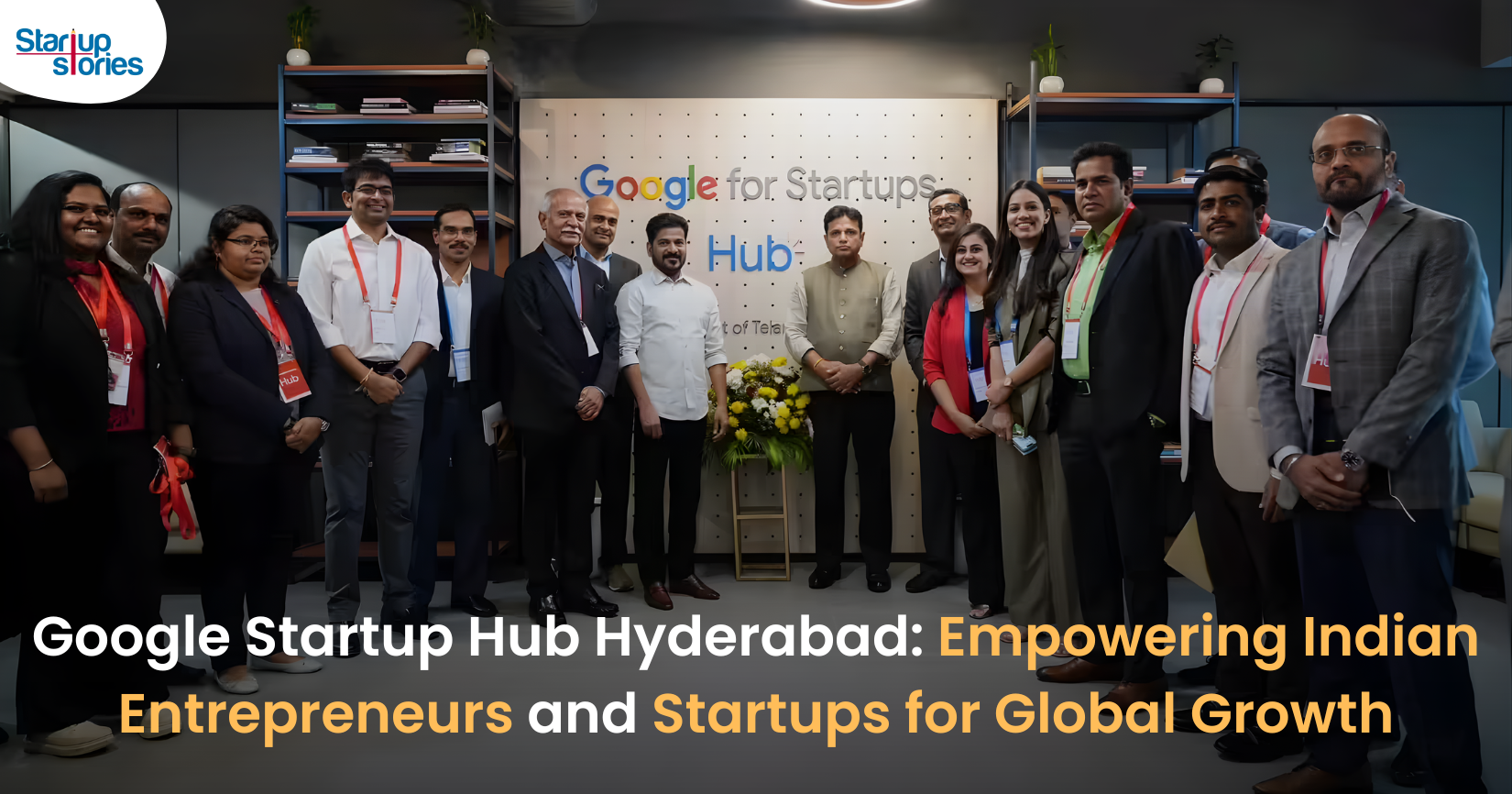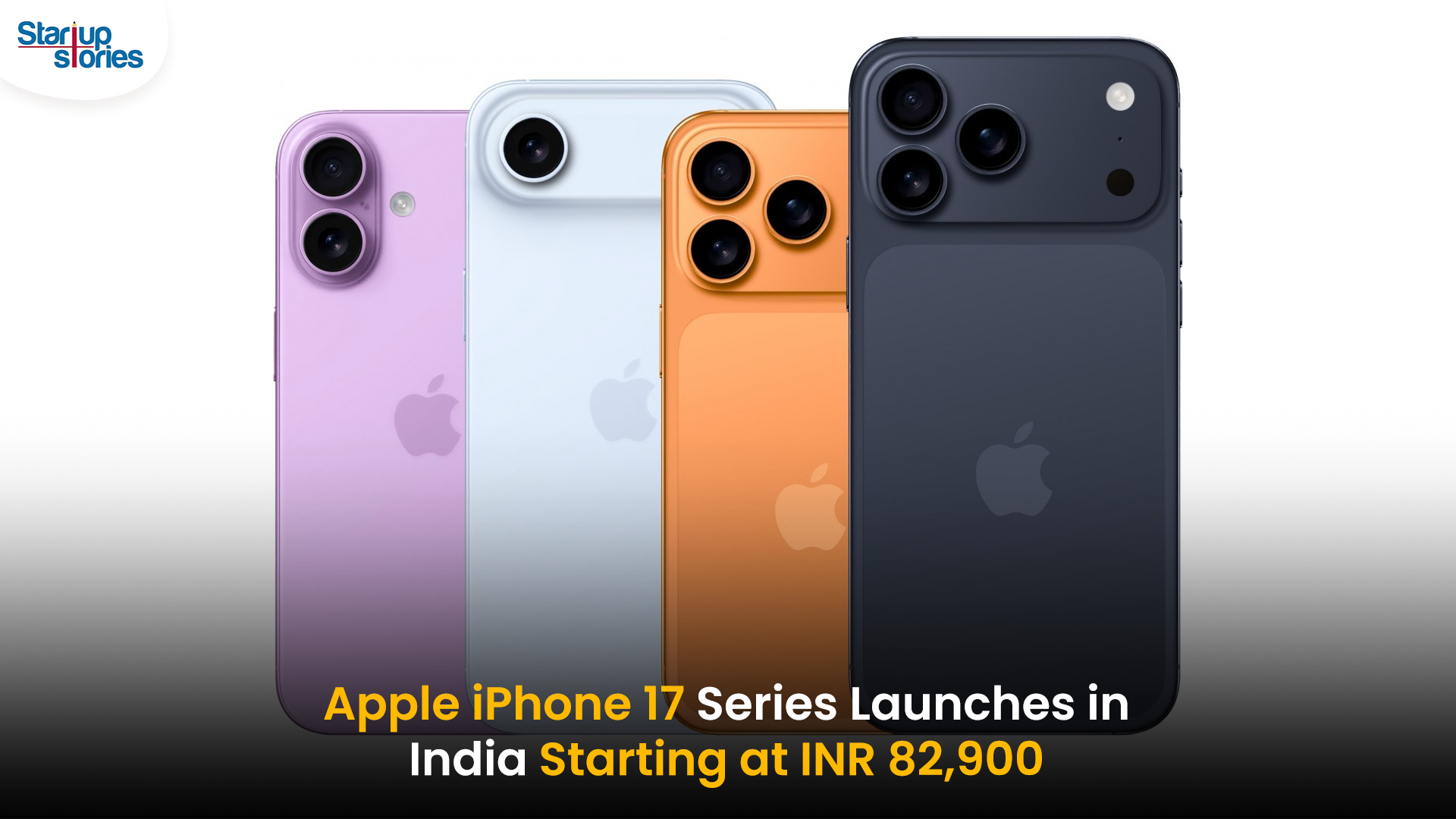News
Former Google CEO Eric Schmidt Invests in 3D-Printed Rocket Maker Relativity Space

Eric Schmidt, the former CEO of Google, has made a significant investment in Relativity Space, a California-based company pioneering 3D-printed rocket technology. This investment comes at a crucial time for Relativity as it navigates challenges and aims to advance its innovative approach to space travel.
Overview of Relativity Space
Founded in 2015, Relativity Space aims to revolutionize space travel through its unique 3D printing techniques, which allow for the rapid production of rocket components. The company’s flagship rocket, Terran 1, was launched in 2023, but unfortunately, it failed to achieve orbit. Despite this setback, Relativity is now focusing on its next-generation rocket, Terran R, which is scheduled for launch in 2026.
Challenges Faced
Relativity Space has encountered several challenges over the past few years, including funding difficulties in 2024. These hurdles have prompted the company to seek additional capital to support its ambitious plans and operational needs.
Schmidt’s Investment
Schmidt’s investment is particularly timely as Relativity Space works to secure funding for the development of Terran R and its ongoing operations. His backing underscores the growing interest in the private space sector and highlights the potential of innovative technologies like 3D printing to transform space exploration.
Background on Eric Schmidt
Known for his entrepreneurial spirit and philanthropic endeavors, Schmidt has been actively involved in various investment and advisory roles since stepping down as Google CEO in 2011. He has a history of supporting technology-driven initiatives and startups, making this investment a natural extension of his interests.
Industry Context
The investment by Schmidt comes amid an intensifying modern space race, often referred to as “Space Race 2.0.” Private companies are increasingly vying for dominance in orbit, with firms like SpaceX leading the charge. In 2024, SpaceX achieved a remarkable milestone with 134 launches, showcasing rapid advancements in the industry.
Competitive Landscape
Relativity Space is positioned as a key player within this competitive landscape, despite its initial setbacks. The company’s focus on 3D printing technology offers a unique approach that could potentially lower costs and increase efficiency in rocket manufacturing compared to traditional methods.
Conclusion
Eric Schmidt’s investment in Relativity Space highlights the growing interest and potential within the private space sector, particularly regarding innovative technologies like 3D printing. As Relativity prepares for the launch of Terran R and seeks to overcome its funding challenges, Schmidt’s support may provide crucial momentum for the company’s future endeavors. This move not only reinforces Schmidt’s commitment to advancing technology but also signifies a broader trend of increased investment in space exploration initiatives that promise to reshape our understanding and capabilities in this frontier.
News
Google Launches Startup Hub in Hyderabad to Boost India’s Innovation Ecosystem

Google has launched the Google Startup Hub Hyderabad, a major step in strengthening India’s dynamic startup ecosystem. This new initiative aims to empower entrepreneurs, innovators, and developers by giving them access to Google’s global expertise, mentoring programs, and advanced cloud technology. The hub reflects Google’s mission to fuel India’s digital transformation and promote innovation through the Google for Startups program.
Located in the heart of one of India’s top tech cities, the Google Startup Hub in Hyderabad will host mentorship sessions, training workshops, and networking events designed for early-stage startups. Founders will receive Google Cloud credits, expert guidance in AI, product development, and business scaling, and opportunities to collaborate with Google’s global mentors and investors. This ecosystem aims to help Indian startups grow faster and compete globally.
With Hyderabad already home to tech giants like Google, Microsoft, and Amazon, the launch of the Google Startup Hub Hyderabad further cements the city’s position as a leading innovation and technology hub in India. Backed by a strong talent pool and robust infrastructure, this hub is set to become a growth engine for next-generation startups, driving innovation from India to global markets.
News
BMW’s New Logo Debuts Subtly on the All-Electric iX3: A Modern Evolution

BMW quietly debuted its new logo on the all-electric iX3, marking a significant yet understated shift in the brand’s design direction for 2025. The updated emblem retains the classic roundel and Bavarian blue-and-white colors, but sharp-eyed enthusiasts noticed subtle refinements: the inner chrome ring has been removed, dividing lines between blue and white are gone, and the logo now features a contemporary satin matte black background with slimmer “BMW” lettering. These enhancements showcase BMW’s embrace of modern minimalism while reinforcing their commitment to premium aesthetics and the innovative Neue Klasse philosophy for future electric vehicles.
Unlike rival automakers that reveal dramatic logo changes, BMW’s refresh is evolutionary and respectful of tradition. The new badge ditches decorative chrome and blue borders associated with earlier electric models, resulting in a flatter, more digital-friendly design that mirrors recent branding seen in BMW’s digital communications. Appearing first on the iX3’s nose, steering wheel, and hub caps, this updated identity will gradually be adopted across all BMW models—both electric and combustion—signaling a unified brand language for years to come.
BMW’s strategic logo update represents more than just aesthetic reinvention—it underscores the brand’s dedication to future-ready mobility, design continuity, and a premium EV experience. As the new roundel begins rolling out on upcoming BMW vehicles, it stands as a testament to the automaker’s depth of detail and thoughtful evolution, offering subtle distinction for keen observers and affirming BMW’s iconic status in the ever-changing automotive landscape.
News
iPhone 17 India Price, Features & Availability: All You Need to Know

Apple has officially launched the highly anticipated iPhone 17 series in India, with prices starting at INR 82,900 for the base 256GB model. The new lineup includes the iPhone 17, iPhone 17 Pro, iPhone 17 Pro Max, and the newly introduced ultra-slim iPhone Air. Apple has removed the 128GB storage variant, making 256GB the minimum for all models. The standard iPhone 17 features a vibrant 6.3-inch ProMotion OLED display with a 120Hz refresh rate and an upgraded Ceramic Shield 2 for improved durability. It comes in fresh color options like lavender, mist blue, sage, white, and black.
The iPhone 17 Pro and Pro Max models are powered by Apple’s latest A19 Pro chip and start at INR 1,34,900 and INR 1,49,900, respectively. These Pro models feature sleek titanium frames, significant camera upgrades including 8K video recording, and up to 6x optical zoom in the Pro Max. Meanwhile, the iPhone Air, priced from INR 1,19,900, is the slimmest and lightest iPhone ever, boasting a 6.7-inch Super Retina XDR display with ProMotion technology and a triple-camera setup, positioning itself between the standard and Pro models.
Pre-orders for the iPhone 17 series commence on September 12, with sales beginning on September 19, 2025. Alongside the launch, Apple has reduced prices for the previous iPhone 16 models while discontinuing the iPhone 16 Pro and Pro Max variants. The iPhone 17 series exemplifies Apple’s ongoing commitment to enhancing display technology, camera capabilities, and overall performance, setting a new benchmark for premium smartphones in the Indian market.














xnxxrush
January 17, 2025 at 8:32 am
I really love your blog.. Excellent colors & theme. Did you
make this site yourself? Pleaase reply back ass I’m hoping to create mmy own prsonal site aand wasnt too learnn where you got
thiss ftom oor exactly hat thee tneme is named.
Apprciate it!
BryanSycle
January 24, 2025 at 3:42 pm
Самый быстрый и безопасный сервис обмена электронных денег ждет вас на [url=https://www.bestchange.ru/?p=1305667]BestChange.ru[/url]. Если вы фрилансер, веб-мастер, получаете деньги за услуги и постоянно имеете дело с электронной валютой в сети, то пользоваться традиционными сервисами не всегда удобно. Гораздо приятнее иметь дело с обменными пунктами, где меньше ограничений, лучше курсовая разница, скидки на тарифы для постоянных клиентов. Согласны? На BestChange представлены именно такие обменные пункты, «заточенные» под завсегдатаев Интернета, обладающие безупречной репутацией, решающие любые вопросы на раз-два-три.
Проходите по ссылке — более 500 проверенных обменных онлайн-сервисов в одном месте — [url=https://www.bestchange.ru/?p=1305667]BestChange.ru[/url]
binance
February 23, 2025 at 4:33 am
Thanks for sharing. I read many of your blog posts, cool, your blog is very good.
Mayra Merling
March 4, 2025 at 5:04 pm
I have been absent for some time, but now I remember why I used to love this blog. Thanks , I will try and check back more frequently. How frequently you update your web site?
barrie limo services
March 7, 2025 at 8:11 pm
You can definitely see your expertise in the paintings you write. The sector hopes for even more passionate writers such as you who are not afraid to mention how they believe. All the time go after your heart. “We may pass violets looking for roses. We may pass contentment looking for victory.” by Bern Williams.
tours in patagonia
March 9, 2025 at 3:08 am
I am glad to be a visitor of this complete blog! , regards for this rare info ! .
5 day eviction notice louisiana
March 11, 2025 at 1:51 am
I am very happy to read this. This is the kind of manual that needs to be given and not the accidental misinformation that is at the other blogs. Appreciate your sharing this greatest doc.
moonga
March 12, 2025 at 7:25 pm
Thanks for another informative web site. The place else may I get that kind of info written in such an ideal approach? I have a undertaking that I am just now operating on, and I have been on the glance out for such information.
gomedhikam
March 12, 2025 at 8:40 pm
Today, I went to the beach with my kids. I found a sea shell and gave it to my 4 year old daughter and said “You can hear the ocean if you put this to your ear.” She placed the shell to her ear and screamed. There was a hermit crab inside and it pinched her ear. She never wants to go back! LoL I know this is totally off topic but I had to tell someone!
Enterprise Home Plans
March 13, 2025 at 5:05 am
I like what you guys are up also. Such clever work and reporting! Keep up the superb works guys I?¦ve incorporated you guys to my blogroll. I think it’ll improve the value of my site 🙂
Primebiome
March 15, 2025 at 7:58 am
I believe this site contains some rattling great information for everyone. “He who has not looked on Sorrow will never see Joy.” by Kahlil Gibran.
dog
March 19, 2025 at 6:46 am
I’ve recently started a blog, the information you provide on this site has helped me greatly. Thank you for all of your time & work.
cableavporn.com
March 22, 2025 at 3:39 pm
Hey there! Do youu use Twitter? I’d like to follow you
iff hat wohld be ok. I’m undoubtedly enjouing yoyr bllog and look forward too neew
updates.
zoritoler imol
March 25, 2025 at 2:52 pm
I’ve been surfing online greater than 3 hours nowadays, but I by no means discovered any interesting article like yours. It’s beautiful price sufficient for me. In my view, if all web owners and bloggers made just right content material as you probably did, the internet will likely be a lot more helpful than ever before. “Oh, that way madness lies let me shun that.” by William Shakespeare.
create binance account
March 28, 2025 at 5:18 am
Can you be more specific about the content of your enticle? After reading it, I still have some doubts. Hope you can help me.
ดูซีรี่ย์
March 31, 2025 at 6:34 am
It’s actually a cool and helpful piece of info. I am happy that you shared this useful info with us. Please stay us up to date like this. Thank you for sharing.
droversointeru
April 1, 2025 at 10:01 am
Hi there this is somewhat of off topic but I was wanting to know if blogs use WYSIWYG editors or if you have to manually code with HTML. I’m starting a blog soon but have no coding experience so I wanted to get advice from someone with experience. Any help would be enormously appreciated!
drover sointeru
April 4, 2025 at 8:14 am
Your style is so unique compared to many other people. Thank you for publishing when you have the opportunity,Guess I will just make this bookmarked.2
binance us registrācija
April 11, 2025 at 8:33 pm
Your article helped me a lot, is there any more related content? Thanks!
cloud mining
April 23, 2025 at 3:37 am
Absolutely composed articles, thank you for selective information. “You can do very little with faith, but you can do nothing without it.” by Samuel Butler.
zoritoler imol
April 28, 2025 at 10:30 pm
Thank you for sharing superb informations. Your web site is very cool. I am impressed by the details that you’ve on this web site. It reveals how nicely you perceive this subject. Bookmarked this website page, will come back for more articles. You, my friend, ROCK! I found simply the information I already searched everywhere and simply could not come across. What a perfect website.
crypto mining
May 13, 2025 at 9:25 pm
There is evidently a lot to identify about this. I feel you made some nice points in features also.
lottery without account
May 17, 2025 at 6:22 pm
I like this post, enjoyed this one regards for putting up. “Pain is inevitable. Suffering is optional.” by M. Kathleen Casey.
Danielemode
May 28, 2025 at 2:04 pm
https://biotpharm.shop/# buy antibiotics online
rty9m
June 7, 2025 at 12:13 pm
can i buy cheap clomid without prescription how to buy clomiphene without prescription cost clomid online buy clomiphene tablets how to get clomiphene price order generic clomiphene without rx can i order generic clomiphene online
legit crypto income
June 21, 2025 at 4:37 am
Very good written post. It will be valuable to anyone who utilizes it, including yours truly :). Keep up the good work – looking forward to more posts.
blog here
June 24, 2025 at 9:12 am
I must convey my love for your kindness supporting those individuals that require assistance with this situation. Your very own dedication to passing the message around became extraordinarily invaluable and has surely encouraged girls much like me to achieve their aims. Your entire warm and helpful help denotes this much to me and a whole lot more to my peers. Warm regards; from all of us.
Reba Mulders
July 1, 2025 at 7:10 am
Hiya, I am really glad I have found this info. Today bloggers publish just about gossips and net and this is really annoying. A good blog with exciting content, this is what I need. Thank you for keeping this web site, I’ll be visiting it. Do you do newsletters? Cant find it.
ai smart contract auditor
July 23, 2025 at 11:40 pm
I regard something really interesting about your site so I saved to favorites.
Hawaii medical malpractice lawyer
July 24, 2025 at 7:33 am
This blog is definitely rather handy since I’m at the moment creating an internet floral website – although I am only starting out therefore it’s really fairly small, nothing like this site. Can link to a few of the posts here as they are quite. Thanks much. Zoey Olsen
binance
August 1, 2025 at 2:53 am
I don’t think the title of your article matches the content lol. Just kidding, mainly because I had some doubts after reading the article.
web host
August 7, 2025 at 8:48 am
wonderful post.Never knew this, regards for letting me know.
1WIN
August 10, 2025 at 2:02 am
https://t.me/s/TgGo1WIN/9
1win
August 12, 2025 at 7:13 am
Официальный Telegram канал 1win Casinо. Казинo и ставки от 1вин. Фриспины, актуальное зеркало официального сайта 1 win. Регистрируйся в ван вин, соверши вход в один вин, получай бонус используя промокод и начните играть на реальные деньги.
https://t.me/s/Official_1win_kanal/3891
situs toto
August 16, 2025 at 7:33 am
Great – I should definitely pronounce, impressed with your web site. I had no trouble navigating through all the tabs as well as related information ended up being truly easy to do to access. I recently found what I hoped for before you know it in the least. Quite unusual. Is likely to appreciate it for those who add forums or anything, site theme . a tones way for your client to communicate. Excellent task.
Real estate José Ignacio
August 24, 2025 at 7:07 pm
It’s really a nice and helpful piece of information. I am happy that you shared this useful information with us. Please keep us informed like this. Thanks for sharing.
https://crypto-city.pro/
September 23, 2025 at 2:47 am
I am now not certain the place you are getting your info, but great topic. I needs to spend some time finding out more or understanding more. Thank you for wonderful information I was in search of this info for my mission.
https://crypto-city.pro/
September 25, 2025 at 7:30 pm
Hi, I think your site might be having browser compatibility issues. When I look at your website in Safari, it looks fine but when opening in Internet Explorer, it has some overlapping. I just wanted to give you a quick heads up! Other then that, fantastic blog!
MM88
November 5, 2025 at 10:14 am
Với giao diện mượt mà và ưu đãi hấp dẫn, MM88 là lựa chọn lý tưởng cho các tín đồ giải trí trực tuyến.
Kuwin
November 6, 2025 at 2:54 pm
kuwin sở hữu kho game đa dạng từ slot đến trò chơi bài đổi thưởng, mang đến cho bạn những giây phút giải trí tuyệt vời.
Pink Salt Trick
November 9, 2025 at 3:37 pm
It is perfect time to make some plans for the future and it’s time to be happy. I have read this post and if I could I desire to suggest you some interesting things or advice. Perhaps you could write next articles referring to this article. I desire to read more things about it!
ios超级签
November 9, 2025 at 6:50 pm
苹果签名,苹果超级签平台,ios超级签平台ios超级签苹果企业签,苹果超级签,稳定超级签名
Gelatin Trick for Weight Loss
November 10, 2025 at 1:25 pm
Hi my loved one! I want to say that this post is amazing, great written and include almost all important infos. I¦d like to look extra posts like this .
Kerassentials
November 11, 2025 at 9:46 am
But a smiling visitant here to share the love (:, btw great style.
谷歌蜘蛛池
November 12, 2025 at 11:46 am
利用强大的谷歌蜘蛛池技术,大幅提升网站收录效率与页面抓取频率。谷歌蜘蛛池
iwin
November 13, 2025 at 7:16 pm
iwin – nền tảng game bài đổi thưởng uy tín, nơi bạn có thể thử vận may và tận hưởng nhiều tựa game hấp
Zarejestruj sie, aby otrzyma'c 100 USDT
November 16, 2025 at 4:08 am
Thank you for your sharing. I am worried that I lack creative ideas. It is your article that makes me full of hope. Thank you. But, I have a question, can you help me?
MM88
November 16, 2025 at 12:02 pm
Khám phá thế giới giải trí trực tuyến đỉnh cao tại MM88, nơi mang đến những trải nghiệm cá cược thể thao và casino sống động.
J88
November 20, 2025 at 2:14 pm
Đến với J88, bạn sẽ được trải nghiệm dịch vụ cá cược chuyên nghiệp cùng hàng ngàn sự kiện khuyến mãi độc quyền.
GO88
November 23, 2025 at 10:15 am
Tham gia cộng đồng game thủ tại Go88 để trải nghiệm các trò chơi bài, poker phổ biến nhất hiện nay.
olive oil trick
November 28, 2025 at 12:36 pm
certainly like your web site but you have to take a look at the spelling on several of your posts. Many of them are rife with spelling issues and I find it very bothersome to inform the truth nevertheless I’ll surely come again again.
gelatin trick for weight loss
December 6, 2025 at 7:20 pm
Thank you for sharing superb informations. Your site is so cool. I am impressed by the details that you have on this blog. It reveals how nicely you perceive this subject. Bookmarked this website page, will come back for more articles. You, my friend, ROCK! I found simply the info I already searched all over the place and just could not come across. What an ideal website.
bandar togel
December 7, 2025 at 1:00 pm
Wow! Thank you! I continuously wanted to write on my blog something like that. Can I take a fragment of your post to my blog?
free binance account
December 11, 2025 at 11:14 am
Thank you for your shening. I am worried that I lack creative ideas. It is your enticle that makes me full of hope. Thank you. But, I have a question, can you help me? https://accounts.binance.info/si-LK/register?ref=LBF8F65G
Penetration testing and ethical hackers
December 11, 2025 at 9:21 pm
I genuinely enjoy examining on this website , it contains superb articles. “Literature is the orchestration of platitudes.” by Thornton.